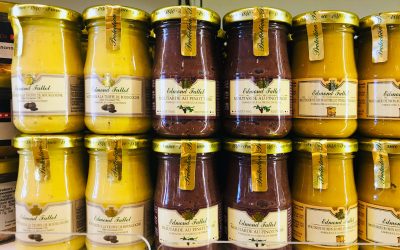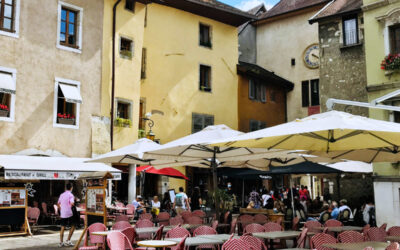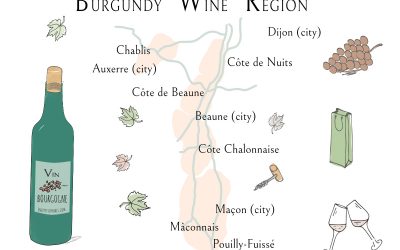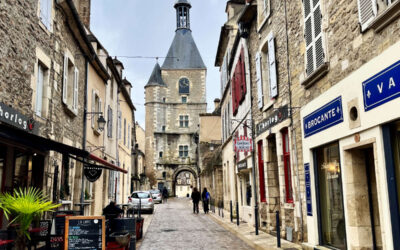There’s not much to do when visiting Dijon, and I mean that as a compliment. Rather than doing, you soak up the atmosphere of a delightfully invigorating town.
If you are not sure where Dijon is, it is located in the east-central area of France, and yes, it is the town of that very famous mustard.
Dijon is the capital of the Bourgogne-Franche-Comte region (a mouthful, I know)! It is easily accessible from Paris with high speeds trains taking only 90 minutes between the two cities.
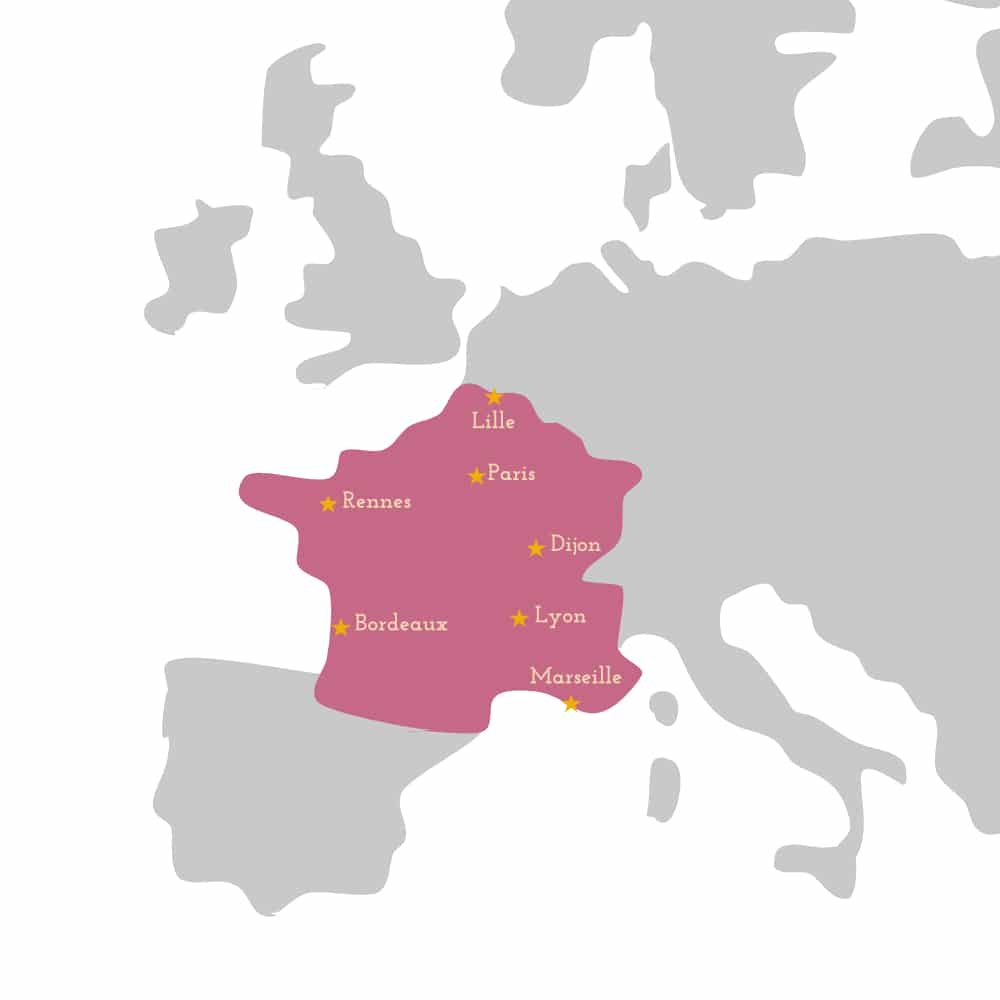
One of the keys to Dijon is in its historic interest. The town center is full of historical and medieval buildings. Altogether, this is not surprising as the Dukes of Burgundy settled here from the 11th to the 15th century.
In fact, there were one of the most powerful among the aristocracy, after the Kings of France, leading to much prosperity in Dijon. It was almost an independent state, and this wealth is still quite evident today.
History
Archaeological digs around Dijon date settlements here to the Neolithic period. Back in Roman days, Dijon was known as Divio, a bustling crossroads for trade and travel between ancient Paris and Lyon.
But it wasn’t until the Middle Ages in the 11th century that Dijon really hit its stride. In 1032 King Henry I of France granted the duchy to his younger brother, Robert, who founded the House of Burgundy.
Eventually, the city of Dijon become the capital of the mighty Duchy of Burgundy. Although closely related, the Dukes of Burgundy were generally opposed to the Kings of France.
The Burgundians even picked the English side in the Hundred Years’ war. (It was Burgundian troops who captured Joan of Arc and burnt her at the stake in Rouen.)
In 1477, with the male lineage of the Valois dukes of Burgundy became extinct. In the same year, following the marriage of Mary of Burgundy to Maximilian I of Austria (Holy Roman Emperor), the title “duke of Burgundy” shifted to the Habsburg monarchs. This would cause even more conflict.
During the Renaissance, Dijon became a hotspot for art and architecture, led by subsequent dukes of Burgundy. Eventually, the 1789 French Revolution led to many nobles to flee France and titles to be abolished.
Today, Dijon still wears its history on its sleeve. Its ancient cobbled streets still manage to charm locals and visitors alike with its timeless elegance.
Best things to do
1. Parcours de Chouette (Owl’s Trail)
One of the most eclectic things to do when visiting Dijon is following the Owl’s Trail. The Owl has long been associated as the “unofficial talisman” of Dijon. Head to the Tourist Office and you can pick up an Owl’s Trail map (Parcours de Chouette).
It’s fun for kids, families and grown-ups alike, and will give you a tour of 22 important and historic sites around the city that really delve into its history and charm. It can also be completed in a 1-2 hour walk.
2. Palais des Ducs (Palace of the Dukes)
Other things to explore include the Palace of the Dukes and Burgundy States, which was extended and remodeled during the 18th century. Today the building is the city’s town hall, so you cannot wander through freely, although guided tours are available through the tourist office.
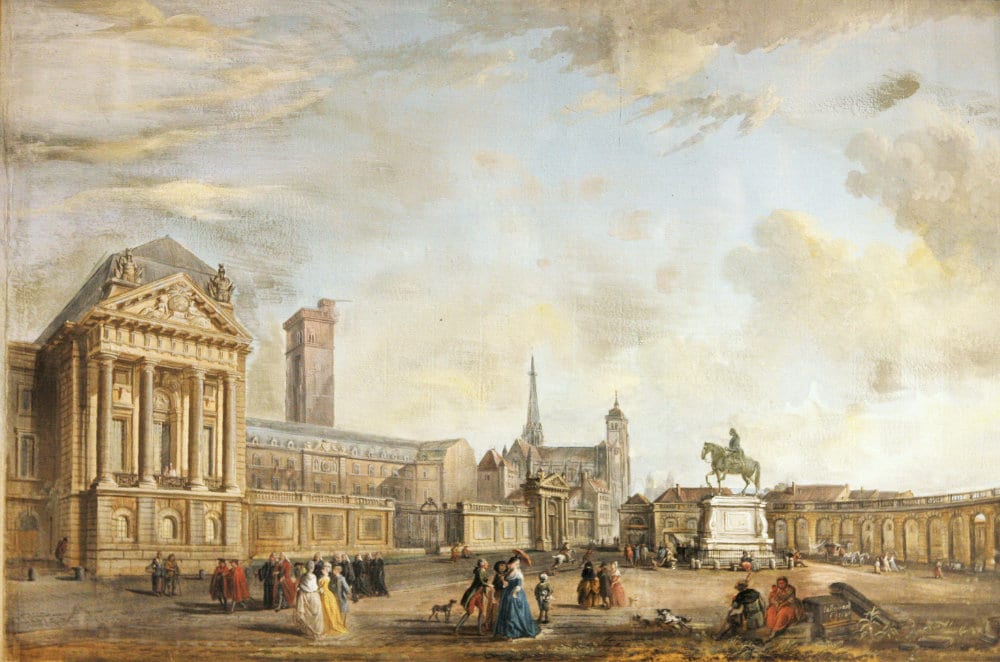
However, you can visit the Musee des Beaux-Arts, which is housed in the palace and is one of the oldest museums in France. It holds many works of fine art from the collection of the Dukes of Burgundy, including the painting you see above. It also includes the Tombs of the Dukes of Burgundy, and is well worth the visit.
3. Church of Notre-Dame
A trip to the Church Notre Dame is also warranted, it isn’t quite as grand as the Notre Dame de Paris Cathedral or the other cathedrals around France. However, there’s a tiny owl on one of the pillars that legend says will grant your wish or give you good luck if you rub it with your left hand.
People have been coming for decades and least, so much so that the tiny statue was damaged, repaired, and is now watched over by CCTV. Still, everyone needs a little luck.
4. The Historical Centre
In the Old Town central district, you will notice the half-timbered houses from the 15th century. Don’t miss Rue Verrerie, Rue des Forges, and the main artery through the city, the Rue de la Liberte.

At the intersection of the Old Town, is the central Place du Bareuzai is one of the most touristic places in the city, with its central fountain representing a winemaker treading grapes.
5. The local specialities
Local specialties, of course, include the Dijon mustard which is a must. There are several flavors of dijon, with everything from honey mustard to a spicy variety that will pique your interest.
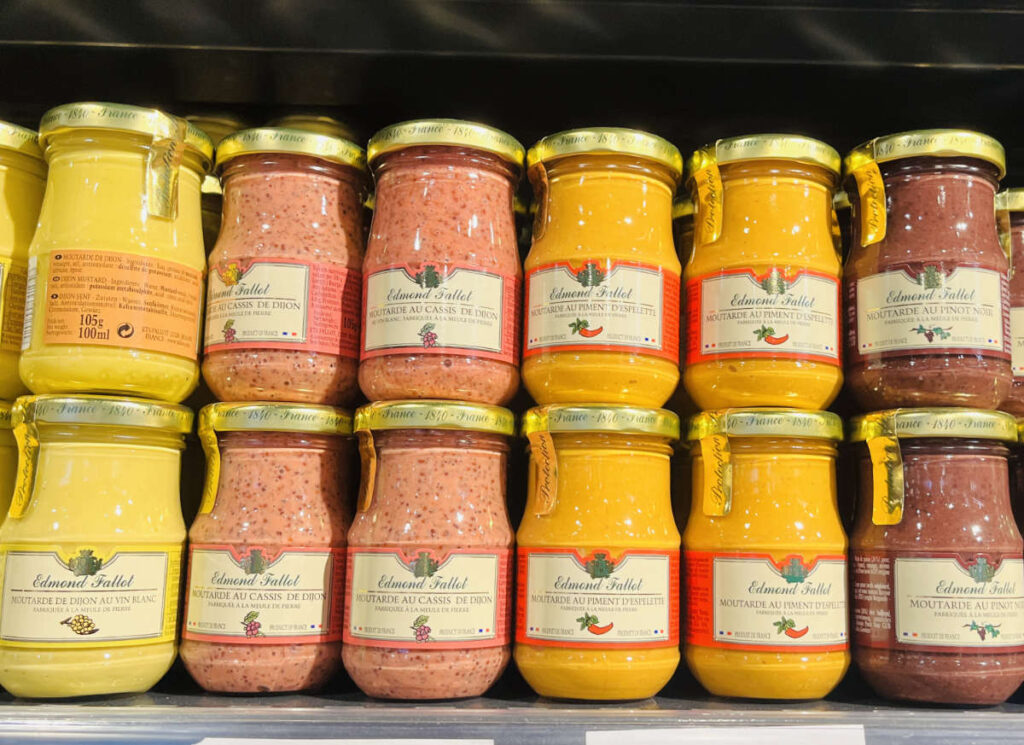
Named after the town of Dijon, the traditional recipe uses crushed brown mustard seeds and white wine or a mix of wine vinegar, along with water and salt.
Unfortunately, the appellation “Dijon mustard” is not a legally protected appellation, as around 80% of the mustard seeds are imported from Canada. The term refers to a manufacturing method and a type of mustard, rather than a product linked to the terroir (land).
You will also find numerous touristy, yet charming shops selling souvenirs, local food, and wine.
6. Go on a wine tasting
Being part of the Burgundy region, Dijon also has some fine wines to enjoy whilst sitting at a café table. The Burgundy region has the highest number of AOCs in France, with no less than 37 Grand Crus.
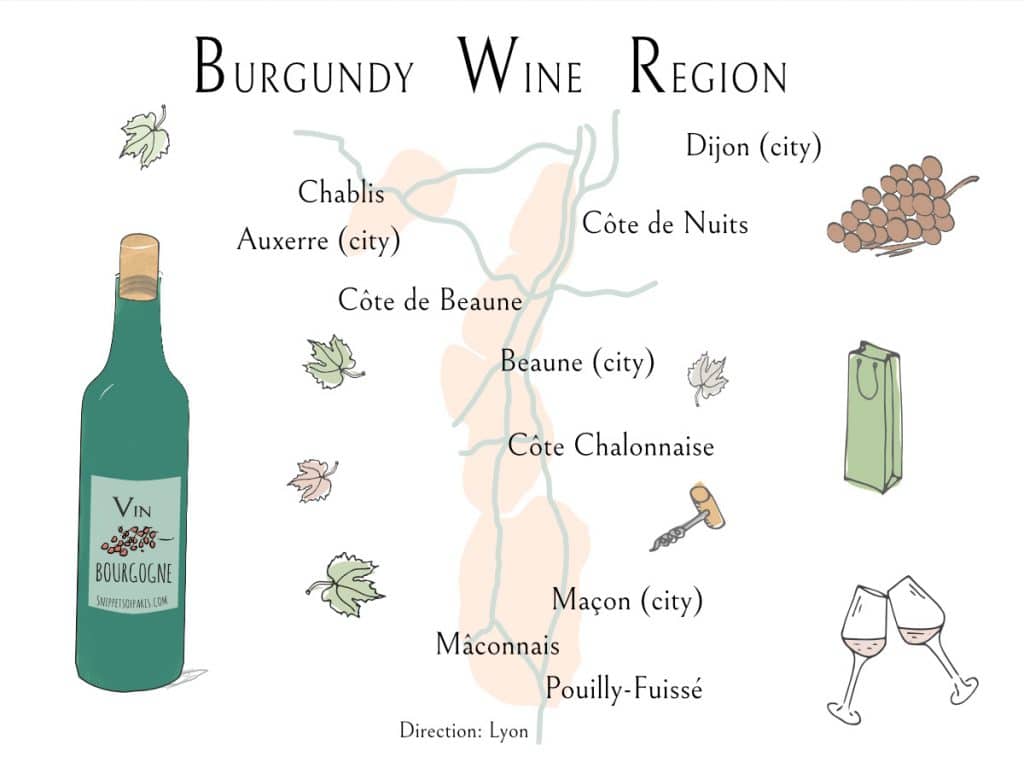
Some of the most famous names in French wines like Chablis Grand Cru, Corton, and Clos de Vougeot come from Burgundy. You can read more about Burgundy wines here.
You could go on a wine tasting tour in the surrounding countryside, and the nearby city of Beaune.
How to get to Dijon?
Dijon is easily accessible by TGV high speed train. It takes about 1h40 from Paris, 1h50 from Lyon, and around 3h30 from Marseille. There is also a small airport around 6km away from Dijon city center, in the town of Longvic.
How many days should you spend here?
A weekend trip would be ideal, I would recommend spending at least 1 night, in order to enjoy the city in the evening. You can also coordinate your visit to Dijon along with visits and day trips to nearby towns like Maçon, Auxerre, Avallon, and Bourg-en-Bresse.
Where should you stay?
The Palace of the Dukes, Notre Dame de Dijon are all within a 10-minute walk of each other, staying in the Old Town area is ideal.

So if you are thinking about a short break, Dijon is a great place to unwind. A great destination for a harmonious weekend away from the hectic pace of big city life. It is a place to savor the French word flâner: wander about, enjoy the food, sit around, people watch, and gaze in awe at the beautiful buildings.
It’s no wonder that in 2015 the town was granted UNESCO World Heritage status. If you enjoyed that article, you may like to read more about traveling around France. Bon voyage and à bientôt!
✎ Photo and Guide by: Dave Chant | Facebook| Instagram

